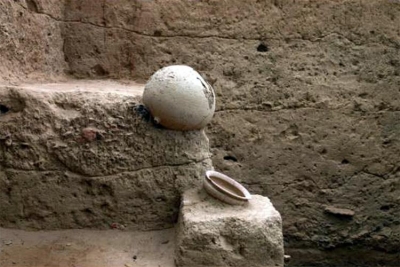
- The Sangam era could be 300 years older than thought. Cultural deposits unearthed date back to a period between 6th Century BCE and 1st Century CE. This is the first time the date has been officially announced by the TNAD.
- The Keezhadi site provides overwhelming evidence of the presence of an urban settlement. The artefacts suggest that urbanization took place on the Vaigai plains in Tamil Nadu around 6th century BCE, making it contemporary to the Gangetic plain civilization. The discovery of brick structures with classical features such as platforms, ring wells, rectangular tanks, square tanks with extended structures, and channels vouches for the presence of an urban culture there.
- Sangam people may have participated in recreational activities – as many as 110 dice made of ivory have been unearthed.
- The Keezhadi findings push back the date of the Tamil-Brahmi script to another century, i.e., 6th century BCE.
- Fifty six Tamil-Brahmi inscribed potsherds have been recovered from the site of excavation undertaken by the TNAD alone. These suggest that the residents of the Sangam era attained literacy or learned the art of writing as early as 6th century BCE.
- There are also other markings alongside the Tamil-Brahmi symbols which apparently suggest a connection with the Indus Valley civilization. Artefacts with ‘graffiti’ or ‘markings’ establish a possible link between the scripts of the Indus Valley Civilisation and Tamil Brahmi, which is the precursor to modern Tamil.
- Skeletal fragments of animals suggest that animals were used predominantly for agricultural purposes.
- Pottery specimens confirm that water containers and cooking vessels were shaped out of locally available materials.
Picture Credit : Google
